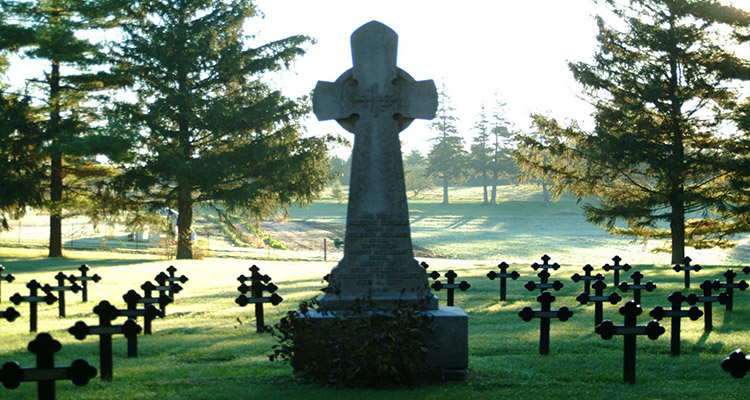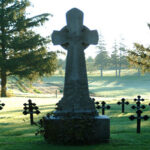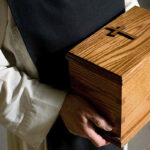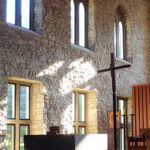For most of its 2,000-year history, cremation was forbidden by the Catholic Church. This teaching was born of historical context as well as biblical interpretation.
In early times, Romans cremated their dead as a rejection of an afterlife, a direct contradiction to the Christian hope of resurrection. Therefore, cremation was associated with pagans and Christians forbade it in favor of traditional burial.
Drawing on scripture, early Catholics believed what we profess today: We are an incarnational people who believe creation is holy because, “The Word became flesh and made His dwelling among us” (Jn 1:14). God is not somewhere “up there” but within. As God is in us, we are “a temple of the Holy Spirit” (1 Corinthians 6: 19) and the body is to be treated with respect both in life and after death. Because cremation is a destruction of the body, the Catholic Church prohibited it. Only in emergency situations when the quick disposal of bodies was a civil necessity was cremation permissible.
This is no longer the case. Why? The intention of cremation has changed over the years. Though this requires some assumptions and generalizations, many people seem to opt for cremation not because they reject resurrection, but for economic reasons, environmental concerns, sanitation preference, and the like. The leaders of the Catholic Church called The Second Vatican Council in 1963 for spiritual renewal and discussion. Cremation was on the list.
After the reforms of the funeral and burial rites named by Vatican II, the Church took a more relaxed approach, allowing cremation. However, due to confusion in the years that followed, the Church needed to set some guidelines. The Congregation for the Doctrine of the Faith issued a statement of clarity and directive. ‘Cremation does not affect [the] soul, nor does it prevent God from raising up the deceased body to new life.’ If a Catholic chooses cremation, it is required that:
- Cremated remains should still be treated with the same respect as corporal remains
- When a loved one has been cremated, their ashes must be kept intact, the same as one would treat a body
- The ashes may not be scattered, separated, or reserved
- Ashes should be placed in a proper vessel (such as one of our urns)
- Ashes, within a proper vessel, should be interred in a burial plot, columbarium or mausoleum
- It is the preference of the Catholic Church to have the body present for the funeral rites and cremated afterwards.
Traditional burial or cremation followed by burial are, according to the Church, the best ways to comply with the dignity we owe the human body. How does this compare to other faiths?
Christians: Most Christian denominations except for Greek Orthodox, allow cremation.
Anglicans/Episcopalians, Baptists, Lutherans, and Methodists: Cremation is allowed before or after the funeral rite.
Presbyterians: Cremation is allowed, but burial is preferred
Jews: Cremation is allowed among Reform Jews but is not allowed for Orthodox Jews who only permit traditional burial
Muslims: Cremation is forbidden to the point of excluding someone from a Muslim burial
Buddhists: Allow cremation; ashes may be kept by the family, enshrined, or scattered at sea
Hindus: Require cremation for all except babies, children and saints
Mormons: Encourage burial, but allow cremation
We understand that this is a very personal decision for you or your loved one. Regardless of faith background, all are welcome to purchase our handcrafted wooden urns or caskets as preference or belief permits. Advanced planning helps you to make decisions about your final wishes ahead of time, providing comfort to your family and ensuring your requests are met.
Sources:
Catechism of the Catholic Church
Connolly, Marshall (2016, October 25) “Catholic Church Issues New Guidelines for Cremation.”
Miller, Don Fr. (2017, October 25) “Catholics and Cremation.”







